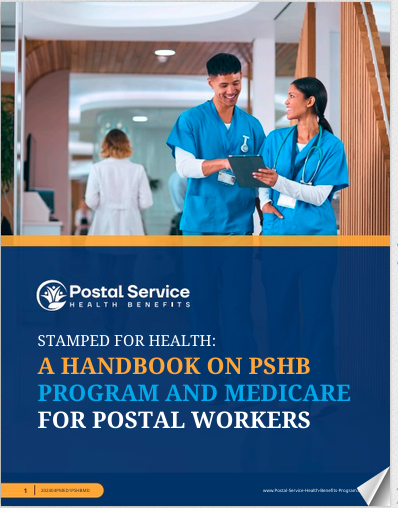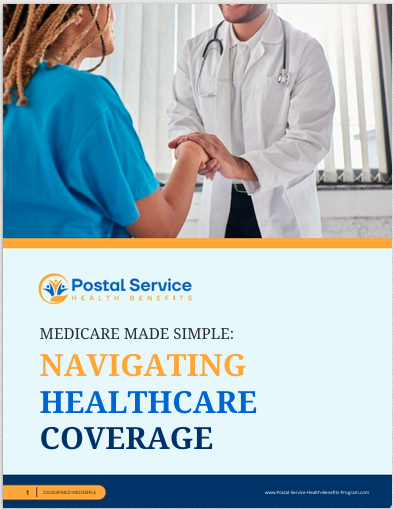Key Takeaways:
-
Combining Medicare with your Postal Service Health Benefits (PSHB) plan can help reduce your out-of-pocket costs and improve access to care.
-
Understanding how Medicare works alongside PSHB ensures you make the most of both programs while avoiding unnecessary expenses.
Why You Should Consider Combining Medicare and PSHB
If you’re a retired postal worker or approaching retirement, you’ve likely spent time thinking about how to structure your healthcare coverage. The good news? Your Postal Service Health Benefits (PSHB) plan and Medicare can work together to provide you with strong, cost-effective coverage. But there’s a right way to do it, and getting the details wrong can cost you.
With the transition to PSHB now in full effect, it’s more important than ever to understand how these benefits align with Medicare. Whether you’re newly eligible for Medicare or already enrolled, knowing how these two programs interact can save you money and make your healthcare experience smoother.
Medicare Basics: What You Need to Know
Before diving into how Medicare and PSHB work together, it helps to understand the basics of Medicare. Medicare is the federal health insurance program available to people aged 65 and older, as well as some younger individuals with disabilities. It has four main parts:
-
Part A (Hospital Insurance): Covers inpatient hospital stays, skilled nursing facility care, and some home health services.
-
Part B (Medical Insurance): Covers outpatient care, doctor visits, and preventive services.
-
Part C (Medicare Advantage): An alternative to Original Medicare that bundles Parts A and B (and often Part D) through private insurers.
-
Part D (Prescription Drug Coverage): Covers prescription medications, either as a standalone plan or included in Medicare Advantage.
When you combine Medicare with PSHB, understanding which parts of Medicare you need is crucial.
How PSHB and Medicare Work Together
Do You Have to Enroll in Medicare?
One of the biggest questions for postal retirees is whether they must enroll in Medicare. If you are Medicare-eligible and retire on or after January 1, 2025, you are required to enroll in Medicare Part B to maintain PSHB coverage. If you retired before this date, enrollment is optional but still beneficial in many cases.
Who Pays First?
When you have both PSHB and Medicare, coordination of benefits determines which plan pays first:
-
If You Are an Active Employee: PSHB pays first, and Medicare (if you’re enrolled) acts as secondary coverage.
-
If You Are Retired: Medicare pays first, and your PSHB plan serves as secondary coverage, filling in many of the gaps Medicare doesn’t cover.
This setup reduces your out-of-pocket costs significantly, particularly for hospital stays and outpatient services.
The Cost Benefits of Having Both Medicare and PSHB
Lower Out-of-Pocket Costs
Enrolling in Medicare while keeping PSHB can mean fewer copayments, deductibles, and coinsurance expenses. Many PSHB plans waive certain out-of-pocket costs when Medicare is your primary insurer, making healthcare more affordable.
Prescription Drug Coverage
PSHB plans provide prescription drug benefits, and if you are Medicare-eligible, you will automatically receive Part D drug coverage through an employer-sponsored Medicare Part D plan. This ensures comprehensive drug coverage without needing to purchase a separate Medicare Part D plan.
More Provider Options
With Medicare and PSHB together, you gain access to a wider network of providers. Medicare covers many doctors and facilities nationwide, and PSHB can supplement this coverage, giving you flexibility in choosing where to receive care.
Key Considerations When Enrolling in Medicare
Enrollment Periods Matter
If you’re turning 65 or newly eligible for Medicare, it’s important to enroll during your Initial Enrollment Period (IEP), which begins three months before your 65th birthday and lasts for seven months. If you miss this window, you may have to wait until the General Enrollment Period (January 1 – March 31) and pay late penalties.
For those retiring after 65, there is a Special Enrollment Period (SEP) to sign up for Medicare Part B without penalty if you were covered by PSHB as an active employee.
Medicare and PSHB Premiums
While Medicare Part A is usually premium-free, Part B requires a monthly premium. PSHB premiums vary by plan, but having Medicare as your primary insurer can lower your overall healthcare expenses, as PSHB may cover some of what Medicare doesn’t.
Maximizing Your Benefits with the Right Plan Choice
Choosing the Right PSHB Plan
When selecting a PSHB plan to pair with Medicare, consider factors such as:
-
Whether the plan waives certain deductibles or copayments for Medicare enrollees.
-
How well the plan coordinates with Medicare to minimize your expenses.
-
The plan’s prescription drug coverage and whether it aligns with your medication needs.
Reviewing Your Coverage Annually
Healthcare needs change, so it’s wise to review your Medicare and PSHB benefits every year during Open Season (November 11 – December 13). Adjustments in coverage, premiums, and provider networks could affect which plan works best for you.
Avoiding Common Pitfalls
Not Enrolling in Medicare on Time
Failing to enroll in Medicare Part B when required can lead to penalties and loss of PSHB coverage, which can be costly in the long run.
Paying for Duplicate Coverage
Some retirees mistakenly enroll in extra plans they don’t need. If Medicare is your primary coverage, selecting a PSHB plan that coordinates well with Medicare can help avoid unnecessary costs.
Ignoring Changes in Benefits
Both Medicare and PSHB plans update their benefits annually. Staying informed about these changes ensures you don’t miss out on potential cost savings or new benefits.
Making the Most of Your Retirement Healthcare
By understanding how Medicare and PSHB work together, you can optimize your healthcare coverage and reduce out-of-pocket expenses. Whether you’re planning for retirement or already enrolled, reviewing your options and ensuring your plans align with your needs can make a significant difference in both your budget and access to care.
If you have questions or need help choosing the right coverage, get in touch with a licensed agent listed on this website. A knowledgeable agent can guide you through the process, ensuring you make informed decisions about your healthcare.






